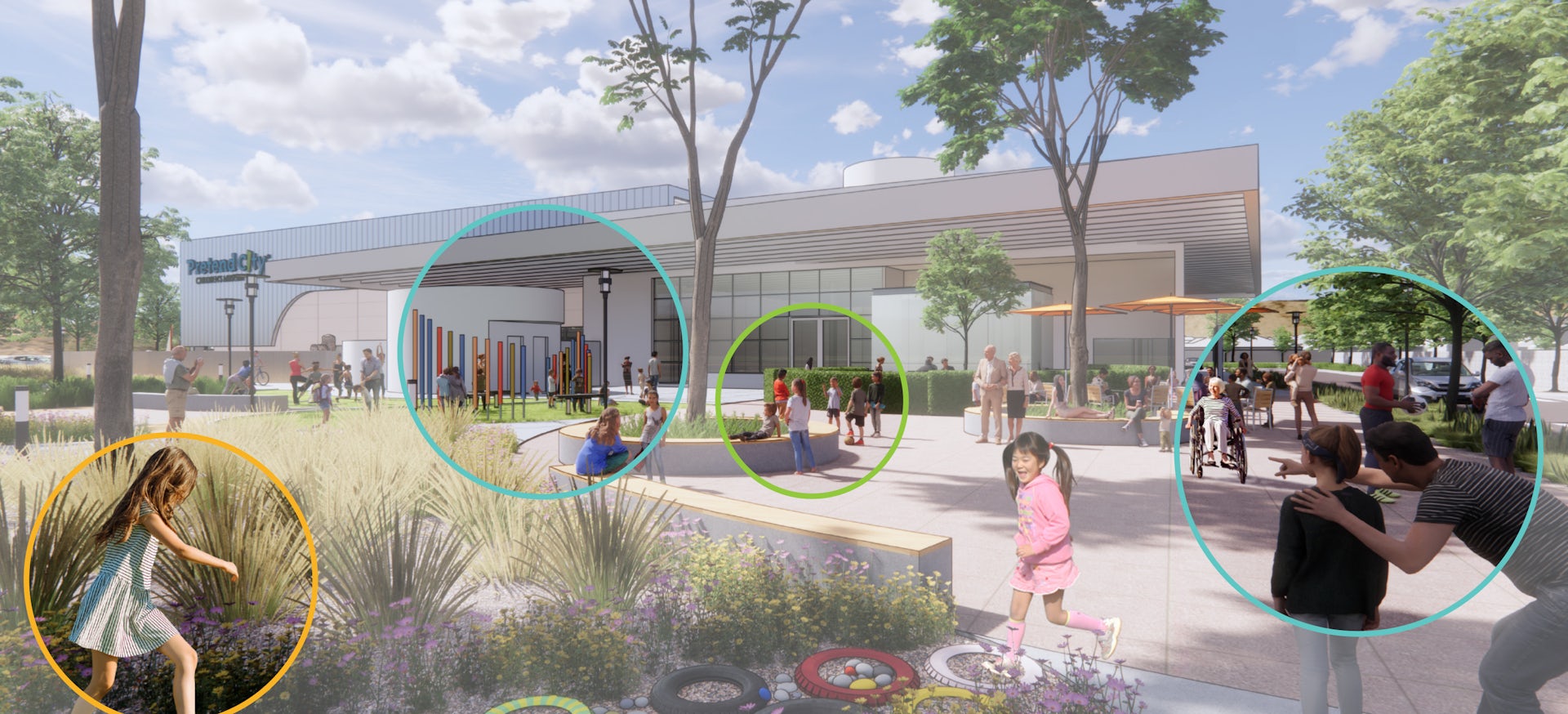Children look at space differently from adults. It’s not simply the view from their height; their young brains don’t conceptualize space in the same way. For a child under age 6, there is no built-in system to help navigate a space. Without clues, they just dive in.
LPAred recently explored the available research on early childhood wayfinding for the conceptual design of Pretend City, an experiential children’s museum in development in Irvine, California. The goal was to better understand how design can engage young children and provide a safe environment, while still encouraging them to play and explore.
“These age groups are most affected by this because they are too young to really make the mental representations needed to navigate through space with an end destination in mind,” says LPAred Research Analyst Rachel Nasland. “As you start to get closer to age 8 or 9, kids start to conceptualize space a little bit more readily.”
Children under 6 are not able to create a mental map of a space in the same way as older kids. They react to space based on their perceptions of what the space allows them to do, not yet understanding what may be appropriate or allowed, studies have found. When they encounter a big open space, there is no clear indication of how they should behave or what direction to travel in. It can be overwhelming. Their impulse is to dance and run and twirl. Young children often use their bodies to make sense of a space. They understand what they can fit under, where they can climb, what they can touch.
“Kids are going to do whatever the space allows them,” Nasland says. “You need to design the space in such a way that it nudges children toward behaviors that we want them to engage in.”
Specific elements can help move them through spaces without dampening their sense of curiosity. Curved paths encourage children to walk along the edges and explore the entire space, instead of a hallway opening to a square room. Lower ceilings can help define spaces; wider hallways can accommodate families and groups. Small breakout areas where kids can sit calmly for a moment allow them to process what they’ve seen and retain memory better.
“What you want to avoid with children’s development is always telling them ‘No!’” Nasland says. “You want to allow them to develop those mental connections, but without discouraging their sense of exploration.”
Research focuses on several key considerations for those seeking to develop wayfinding and design strategies to help young children safely explore and experience a space.
ORIENTATION IS AIDED BY ARCHITECTURAL FEATURES THAT DRAW ATTENTION
Children younger than 3 wander without feeling lost. The space must guide them or draw their attention toward a certain direction or destination zone. Children aged 3 to 6 start to experience disorientation but don’t have adequate wayfinding skills (Cornell & Hill, 2006).
CHILDREN MAKE SENSE OF SPACE USING EMBODIED AND SENSORY FEEDBACK
They will use their bodies to explore space and learn what the space affords (Hackett, Procter & Kummerfeld, 2018). For example, children will often learn about space by running their hands along it, running into it or crawling inside of it.
CHILDREN DEVELOP PATTERNS WITH REPEAT VISITS
For children, the previous visit informs the next based on embodied knowledge (Hackett, Procter & Kummerfeld, 2018). On their first visit, children tend to move very fast around each room to get a sense of the place, whereas, on follow-up visits, children tend to slow down and revisit spaces that spark their curiosity.
MOVEMENT IS INSPIRED BY A VARIETY OF SPATIAL QUALITIES
- The size and arrangement of a space ask children to take up certain behaviors (Jelic et al, 2020).
- Natural light and open spaces offer room for bigger movements, encouraging children to move around (Hackett, Procter & Kummerfeld, 2018).
- Rugs, cushions, soft seating and enclosed spaces prompt relaxation, comfort and intergenerational interactions.
- Tactile quality signals a message of approach or avoidance for children (e.g., rough textures will discourage children from revisiting that space).
- Drawing the eye up to the ceiling or down to the floor invites exploration (Hackett, Procter & Kummerfeld, 2018).




